Estimated reading time: 4 minutes
Do you know what your fruit trees should look like in spring? New fruit growers, in particular, are often unsure of what’s ‘normal’ in the different seasons.
Related Articles
Learning from other fruit growers
Having a peer group of like-minded gardeners to spend time with is one of the best ways to learn about fruit growing.
Fruit tree training
Sometimes pruning isn’t enough to achieve the shape you want in your fruit tree, and some extra training is required.
Why does biodiversity matter?
Building biodiversity in your garden means you’ll grow healthier plants with fewer pest and disease problems.
That was certainly the case for us as we learned our trade. Even experienced fruit growers usually learn something new every single year if they’re paying close attention to their trees.
As you get more experience with growing fruit, you’ll gradually learn what to look for at different seasons. You’ll notice signs that tell you what’s going on in the trees and the soil.
That way you can tell if you’re on the right track with how you’re looking after your trees.
In the meantime, here are a few pointers about what to look for.
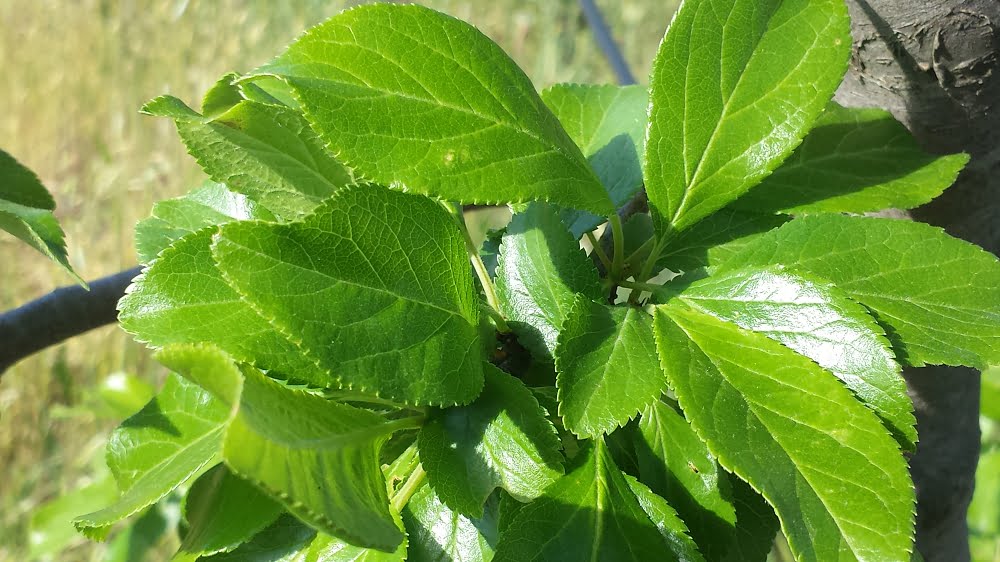
What to look for first …
The early flowering varieties (like Anzac peaches) are good indicator varieties.
The first sign to look for is whether they’ve flowered well and whether the leaves have started to grow strongly. That tells you that the tree is basically happy.
Once the flowers finish you should be able to see small fruit forming, like this Bramley apple tree.
By mid to late spring you should start to get an idea of how much fruit your trees will bear this year. This is called the ‘crop load’.
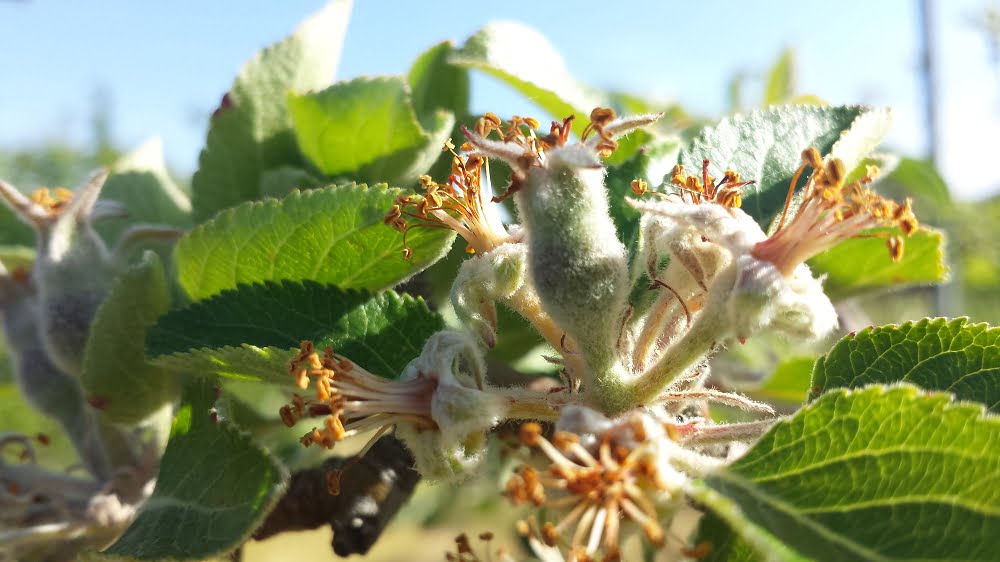
Leaves are a great indicator of tree health in spring
Next, have a really good look at the leaves. They should be big, a bright green colour, and nice and shiny. The gorgeous, healthy-looking leaves on the plum tree above are a great example.
If your tree is also free from Leaf curl, that’s an added bonus! This is one of the most common diseases of peach and nectarine tree leaves. It can devastate trees and should be avoided if possible using these techniques.
You may notice that the growing tips of the leaves are orange, red, or pink. That’s fine too, as long as the leaves turn a healthy green as they grow.
The other main thing to look for early in spring is whether any of the leaf buds are starting to extend into new shoots. The ability of the tree to grow this new wood each year is key to the ongoing health of the tree and good crops of fruit.
Here are a few examples of new shoots on different types of fruit trees:


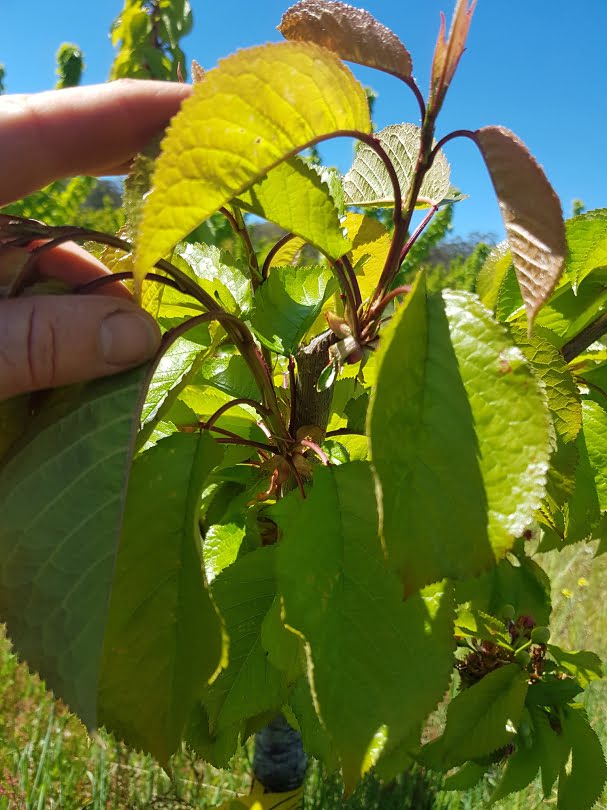
Pests and diseases to watch for in spring
The other things to keep an eye out for in spring are some of the main pests and diseases. These might already have made their presence felt.
Here are some of the problems to keep an eye out for:
Aphids: Are you seeing any on your trees? Which trees, and what type of aphids? How many are there? Can you spot any predator insects?
Phytophthora: In spring this root rot disease will appear as “dieback” (though other diseases can also cause dieback).
Earwigs: Are there any earwigs in your fruit trees? Which type of tree? How many earwigs are there, and can you spot any damage they’ve caused (e.g. to leaves or small fruit)?
Blossom blight: This disease causes flowers to rot, mainly on apricot trees but also on peaches, nectarines, and even plums on occasion.
Leaf curl: You’ll only find this disease on peach and nectarine trees, where it shows up as red deformed leaves.
Learning how to monitor your trees and doing a spring review of all your fruit trees can help you catch any problems early in the season.
It’s a key skill for home fruit growers. It will help you get to know your trees and nip problems in the bud (pun intended).
Here’s hoping your fruit trees bring you lots of joy this season!
Related Articles
Learning from other fruit growers
Having a peer group of like-minded gardeners to spend time with is one of the best ways to learn about fruit growing.
Fruit tree training
Sometimes pruning isn’t enough to achieve the shape you want in your fruit tree, and some extra training is required.
Why does biodiversity matter?
Building biodiversity in your garden means you’ll grow healthier plants with fewer pest and disease problems.



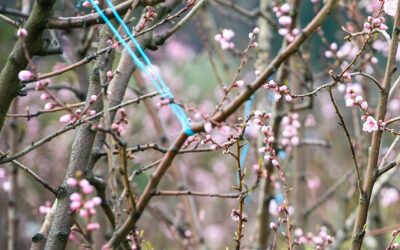
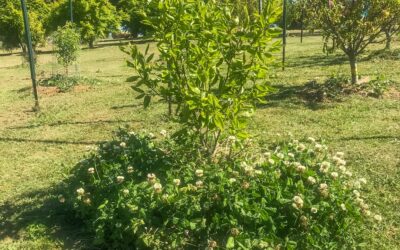


How do I make fruit fly baits for Perth Western Australia. My nectarines and peaches are already fruiting and something is eating the skins of the new fruits. The fruits are only as big as a 10 cts piece
Hi Elizabeth – have you checked out our free Fruit Fly resource? You can download it here: https://growgreatfruit.com/online-courses/. Good luck with it!
Thank you for all these helpful posts! We are wondering if we let our fruit grow this year Or if not when do we remove the fruit – as a flower bud or small fruit? We planted about 9 trees (from you) in winter 2019. Thanks!
Hi Rachel, rule of thumb is that if the tree has all its structural branches you can let it have some fruit. If not, it’s still in the establishment pruning phase, and so it’s best to pull the fruit off, the earlier the better